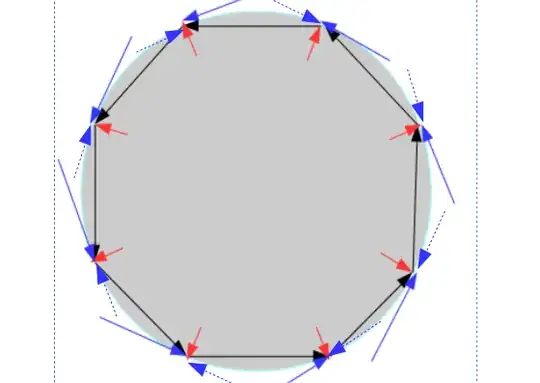How efficiently can light be turned into angular momentum?
Light can be contained for long paths via total internal reflection with some steady decline in intensity due to absorptivity of the medium. This is usually compensated for in telecommunications with a coupled amplifier and the effects of the light on the fiber itself are negligible.
If we reflect the light in a tight circle (via wound fiber or plexiglass cylinder), in the style of an optical resonator ring - we can concentrate many reflections over a small area. The force generated for light reflecting perfectly off a surface is $F={2*I}/c$, where c is the speed of light and I is the light intensity in $W/m^2$. Obviously this does not hold for shallow angle reflections that could get the cylinder turning.
How do we model the torque imparted on a reflective cylinder in this fashion?
Arrows not scaled.
The sum of red arrows cancels out and blue arrows produce a counter-clockwise torque. How do we estimate the fraction of force produced by one light 'circuit' of the circular cross section, if any?
